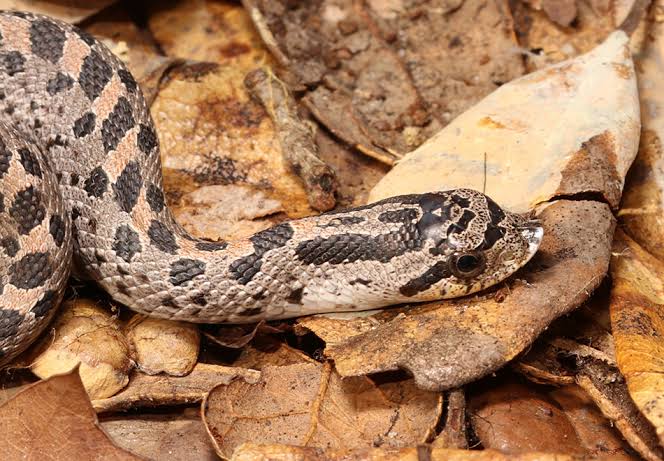The U.S. Fish and Wildlife Service (FWS) announced Friday its proposal to list the southern hognose snake as a threatened species under the Endangered Species Act (ESA). This protective measure is accompanied by a tailored “4(d) rule” designed to foster cooperative conservation efforts with land managers while safeguarding the elusive reptile.
The southern hognose snake, known for its distinctive upturned snout and secretive burrowing habits, faces significant threats across its remaining range. These include extensive habitat loss and fragmentation, high road mortality, and pressures from non-native species. The snake depends on specific open-canopy, upland habitats with sandy soils and a grassy understory – conditions historically maintained by natural fire regimes.
“Conserving the southern hognose snake is also about protecting the vital landscapes that benefit our communities,” stated Christy Johnson-Hughes, FWS Field Office Supervisor. “We are working with the Longleaf Alliance, The Nature Conservancy, state wildlife agencies, and private landowners to conserve the open-canopy, fire-dependent ecosystems, to preserve natural buffers that reduce storm damage, enhance water quality and support local economies and livelihoods.”
A key component of the proposal is the special 4(d) rule. This provision aims to provide flexibility for landowners and managers by allowing exceptions to the ESA’s prohibition on “take” (harassing, harming, pursuing, hunting, shooting, wounding, killing, trapping, capturing, or collecting) when such activities result from specific, conservation-oriented land management practices. These include essential tools like prescribed burns, sustainable forestry practices, control of invasive plant species, and certain utility maintenance operations, all of which are crucial for maintaining the snake’s preferred habitat.
The southern hognose snake, the smallest of its hognose relatives, plays a vital ecological role in the Southeast’s iconic longleaf pine and sandhills ecosystems. Historically, its native range spanned Alabama, Mississippi, North Carolina, South Carolina, Georgia, and Florida. However, its population has severely contracted, and it is now found only in North Carolina, South Carolina, Georgia, and Florida.
The proposed rule was published in the Federal Register on Friday, August 29, initiating a 60-day public comment period. The FWS encourages all interested parties to submit comments and information. Details on how to submit comments can be found at www.regulations.gov by searching for docket number FWS–R4–ES–2025–0210.








Comments